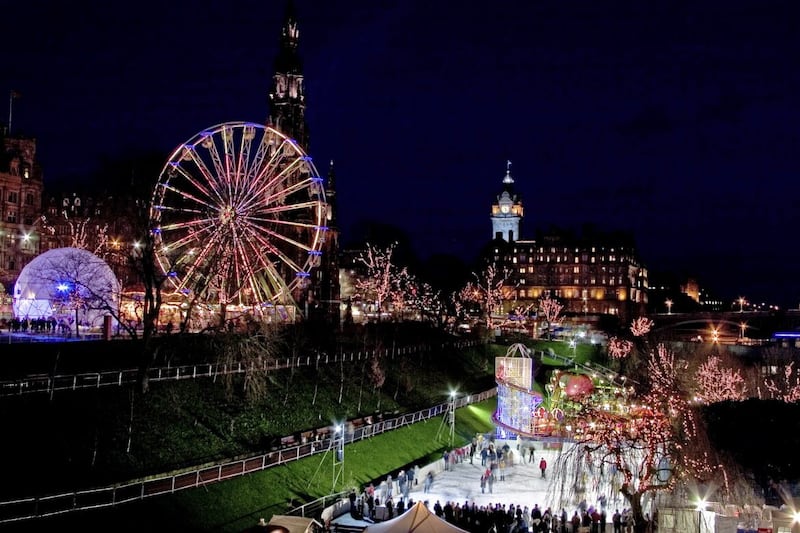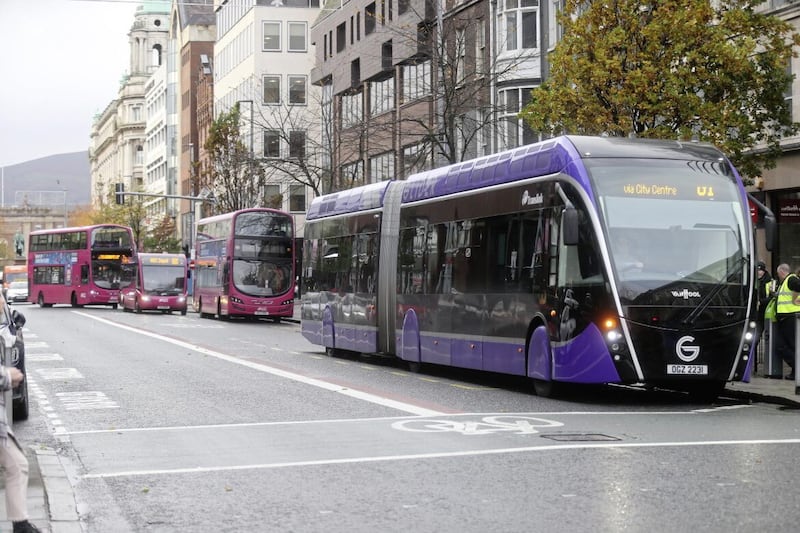STEVEN Spielberg would have gloried it when he was making his blockbusters; Richard Attenborough would surely have used it – but it’s unlikely either film-maker had a clue about what, for 200 million years, has been lying a quarter of a mile underneath Kilroot, Co Antrim. Well, I can tell you...
There are no Jurassic dinosaurs crouching there, in fact no skeletons at all because they could not survive in the conditions, the only monsters nowadays are mechanical.
What Am I Talking About?
A salt mine, the only one in Ireland, and it’s a revelation as I discovered last week.
Here’s the story. In 1965, three Irish American brothers decided to have a look at an old 1800s salt mine in Carrick. The Mahoney brothers arrived from Boston, where de-icing salt was the coming thing, they bought the land, drilled one single borehole and what they discovered 58 years ago is now a multi-million pound industry.
Read more:
Let your imagination soar among works by the art world's brightest stars at Art & Soul exhibition
The Road To Glenlough is a treasure trove of Donegal history
I was ready for freezing temperatures, so my 15-year-old companion and I wrapped up warmly, no need, it was a comfortable 19 degrees deep down with fresh air wafting gently thanks to a sophisticated method of fans and huge curtains, bad air out, good air in. Salt to me is something wonderful. When it snows a scattering dissolves the flakes no matter how compacted, thrown on ice you’ll hear the crackling as it eats into the frozen surface and best of all, when my chest freezer has a build-up of ice in one corner and I can’t move the baskets, I pour salt on it and in seconds I‘ve a perfect runway. And talking of runways, that’s what it’s like underground.
Irish Salt Mines are something of a miracle set out on a grid of north, south, east and west.
From the surface there’s an opening and a concrete roadway that leads steeply downwards, it’s dark and silent, the lights of the Land Rover pick up reflectors along the sides; eventually we reach a heavy curtain that opens automatically to allow access to the mine itself and a commodity that was once used to pay wages such was it’s value to man and beast.
Too much might well be inadvisable but too little of this mineral is a hazard to our wellbeing.
Here in Kilroot, every year half a million tonnes are brought to the surface for onward travel by sea and road for de-icing highways all over the UK and Ireland.
Initially, we enter a slightly scary world, the first thought is 'could the whole thing cave-in?', but that won’t happen thanks to the way the mine is constructed - it’s watertight and safe.
Travelling deeper and deeper our guide knows every inch of the terrain, driving into black tunnels illuminated only by the headlights, then bright lights coming to the current working area: straighten these paths out and they’d stretch over 50 miles.
As we drive, Ryan Carroll explains that no two winters are the same.

“What’s a bad winter for you could be good winter for us. We start looking at the long range forecast in October,” he tells us, “and then we prepare transportation to the customer’s depots. It means working all year round stocking up and shipping out.”
The Mahoney family is now second generation, and from a series of portacabins on the surface, they have developed a modern building overlooking the Irish Sea and the deep water jetty ready to receive the ships that take their cargo not only to the main ports in the UK but to those serving rural communities.
Like everything else, the building is well planned, every window looks towards the Copeland Islands, the Co Down coast, and to the right, Belfast with Goliath looming large in the early morning mist. There are 60 employees in total, 50 underground and 10 looking after the administrative details.
Like a beautiful swan, on the surface all is calm, below a frenzy of noise and machinery.
Unique Structure
Soon we are heading north to the latest ‘face’ being worked on. It’s as safe as houses as they say, the burrowing is done leaving huge squares of land untouched, pillars of security reinforcing the ceiling. “Think of it as a quarry with a roof,” says Ryan.
He mentions two things which I found interesting – there’s no mining under villages or residential areas; and that we only own our land and gardens a few feet down – the rest belongs to the government.
Eventually we arrive at the heart of the workings, and from the blackness and silence during our journey suddenly it’s all go. No dinosaurs, but machines that are huge, heavy and immensely powerful and cast sinister shadows.
Some are no longer manufactured today, yet are still in pristine condition thanks to the dry air, were they to come to the surface and be touched with moisture they would immediately start to corrode.
We see one with teeth scraping away the surface of the salt wall, another is boring deep holes so explosives can be inserted and at six o’clock every week-day, at a safe distance a button is pushed and down come boulders of salt – not white as I expected but sandy coloured and rough. Overnight, fans clear the air ready for the miners to return on the following morning to scoop up the salt with great mechanical shovels, pour it into dumper trucks ready to be carried by conveyer belt to the crusher. Charlie and I left with lot to think and talk about – and a new appreciation of salt mining.
This salt seam stretches across Europe to Russia but beneath Kilroot there are 25 years left before the process of applying to continue further excavation, sourcing mineral rights and the rest of this intricate business begins – because there will always be a need for salt and, I’ve no doubt, there will always be an Irish salt mining process to rely on.









